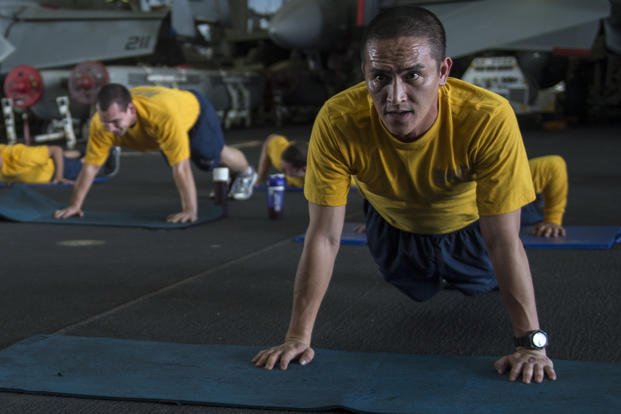There are two types of training you must be prepared for to become a member of special operations of any branch of service or law enforcement.
First, the entrance fitness test, which is typically a test of calisthenics, running and maybe swimming, depending upon the branch of service. Statistics show that scoring well above the minimum standards on these type of "physical entrance exams" increases your chances of graduating from 6% up to 85%. Second, there are follow-on training cycles, which commonly were referred to as combat conditioning courses, that are more job-related tasks such as shooting, rucking, swimming with gear, obstacle courses, as well as running for agility, speed and distance.
There are two types of combat conditioning:
1. To prepare for the rigors of combat that simulate long hours of the missions, such as the insertion/extraction methods as well as the action on the objective.
2. To prepare for challenges of hand-to-hand combat that occurs in chasing, crawling, jumping, fighting and aggressive apprehensions of "bad guys."
Both are quite useful for the modern-day soldier, police officer and especially the special operator. This article/workout focuses on the first form of combat conditioning.
In SEAL training as well as in the teams, we had some great combat conditioning courses. These combat conditioning courses were a bit difficult to prepare for thoroughly. Many required shooting, running with gear, swimming with gear, navigating obstacle courses and other job-related tasking. One of my favorite events was like a "military triathlon," which required cardiovascular endurance, strength, power, agility, precision timing and firearms accuracy. See a related article on another version of the military triathlon.
8-count push-up/pull-up pyramid -- obstacle course simulation
To simulate obstacle courses, you have to try the eight-count push-up/pull-up pyramid run:
This one is a tough, scalable workout that builds up, peaks and cools down. Start off with one pull-up, then run about 20 meters fast and do one eight-count bodybuilder push-up. Run back to the pull-up bar and do two pull-ups, then run back 20 meters to the pushups area and do two eight-count push-ups. Continue this until you fail at pull-ups and repeat in reverse order.
If you do not fail before the 10th set, then keep on going up and see whether you can get up to 20. If you can, you have done 210 pull-ups and push-ups in a workout. That is pretty hardcore and not for beginners, but you can go up to six or seven and back down and have a great workout that simulates the pulling/rope climbs and the bending/pushing/jumping of an obstacle course. The runs between events will help you drop time off the obstacle course if you can run fast between obstacles/events of your timed event.
For our combat conditioning course, we ran with our gear (about 75 pounds dry) for at least five miles, had to shoot expert on a firing range after navigating through an obstacle course and then swam two miles while towing gear and weapons. Then we ran another five miles, but one person in our group of five had to be carried during the "injured-man drill." That is combat conditioning.
Conducting certain skills while under physical stress and exhaustion is what I call combat conditioning. This is the type of fitness and mental toughness required to be successful in most sports, martial arts and military Special Forces. It is not needed as a daily exercise, but you can add this type of "monster-mash" PT once every two weeks to prepare your body properly for the grind of training.
This eBook fitness guide is what I consider an advanced level of fitness routine. It is not for beginners but perfect for folks who are involved with a martial arts regimen and have a basic foundation for fitness. If you want something tougher and more branch specific, see any of these links.
Cardiovascular endurance and muscle stamina through PT, supplemented with weight training, are the key areas for success. Running, swimming, biking and cross country skiing are great cardiovascular endurance activities, and weights and high-repetition calisthenics/rope climbs work well for muscle stamina. Though weight training can be used to develop muscle stamina, it is not necessary and should be used to balance out auxiliary muscle groups.
So learn how to train effectively with and without heavy weights with this program.
I often receive emails from future military members who say they are former high school athletes who want me to critique their weightlifting routine as they prepare for boot camp. Being a former weightlifting football player myself, I stepped back into time some 18 years and saw many of the same things I did to prepare for plebe summer at the Naval Academy. The only bad thing about the plan and the way I prepared for the military and combat is that it was the wrong way to train for military-style fitness. For more information on why you should focus on PT/cardio before training, see Spec Ops Prep.
Stew Smith is a former Navy SEAL and fitness author certified as a Strength and Conditioning Specialist (CSCS) with the National Strength and Conditioning Association. Visit his Fitness eBook store if you’re looking to start a workout program to create a healthy lifestyle. Send your fitness questions to stew@stewsmith.com.
Want to Learn More About Military Life?
Whether you're thinking of joining the military, looking for fitness and basic training tips, or keeping up with military life and benefits, Military.com has you covered. Subscribe to Military.com to have military news, updates and resources delivered directly to your inbox.


















